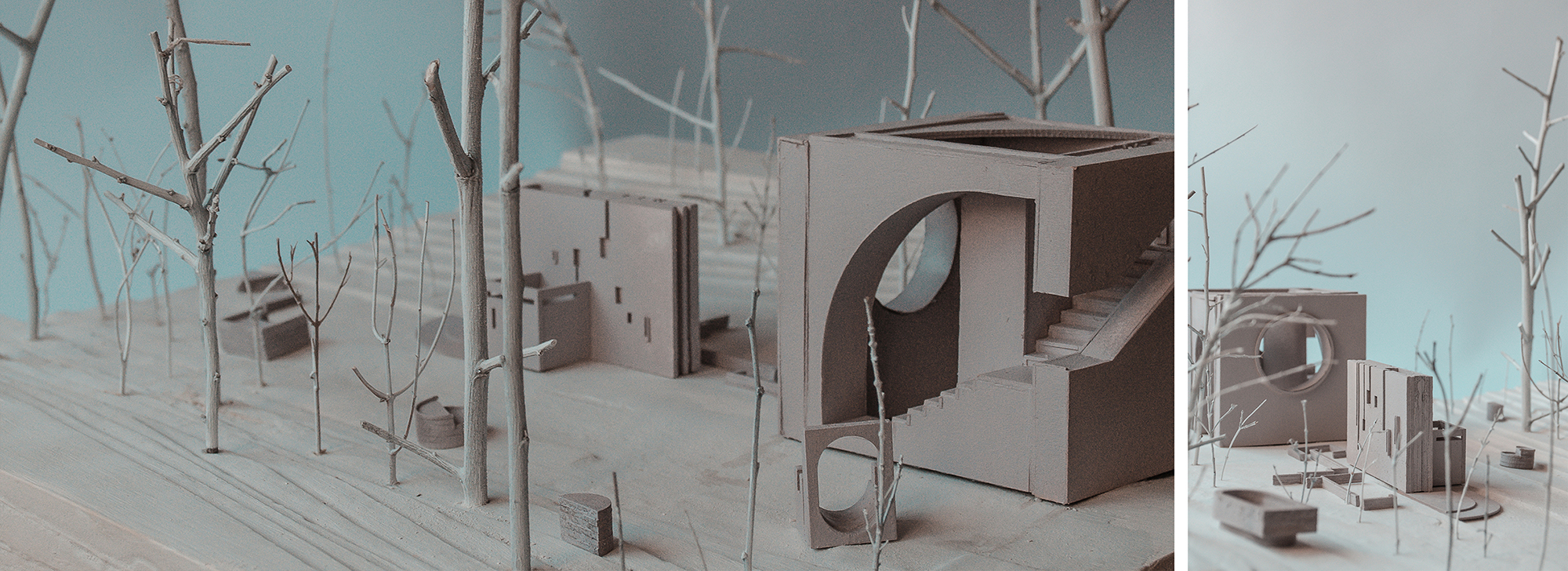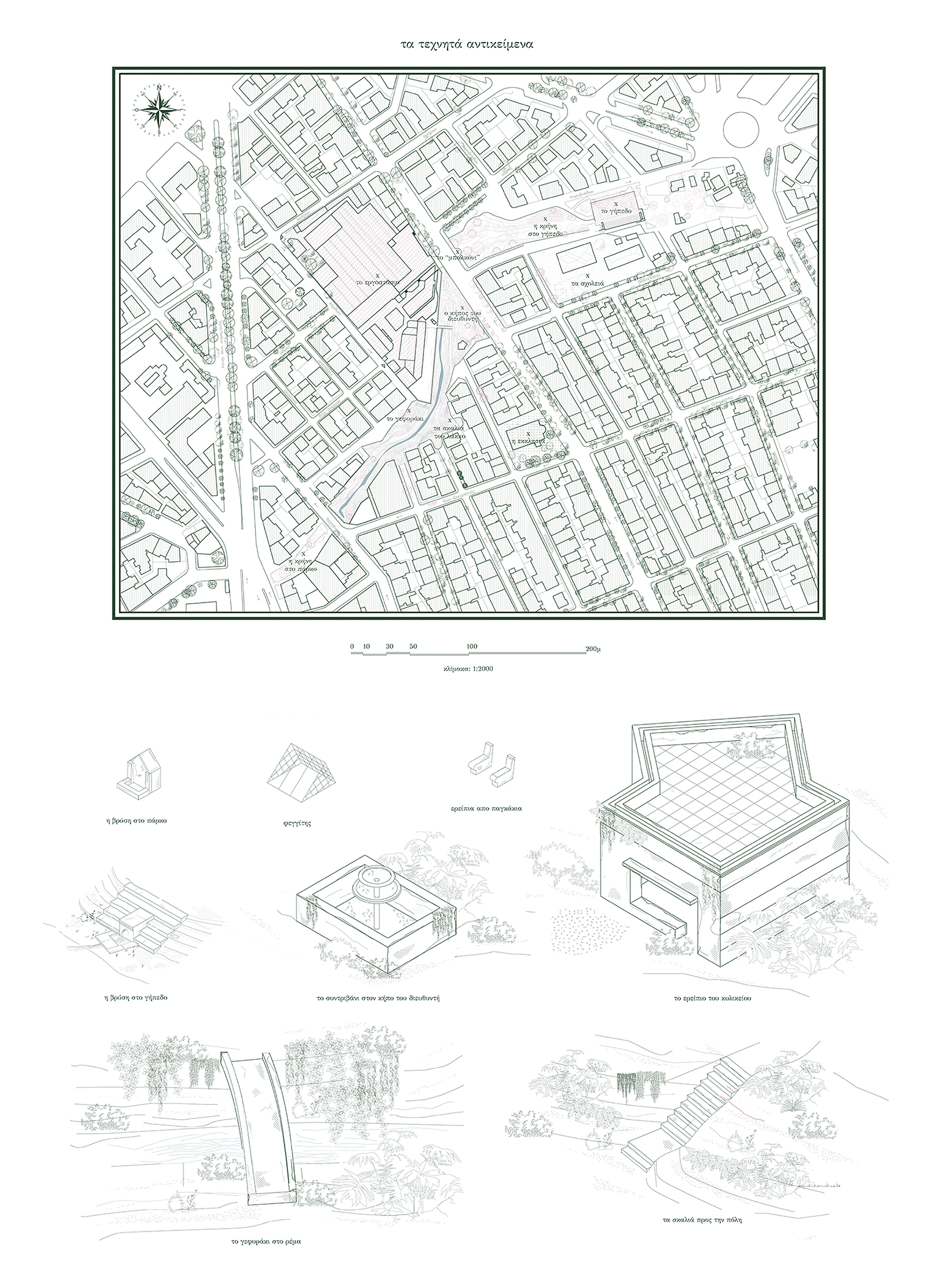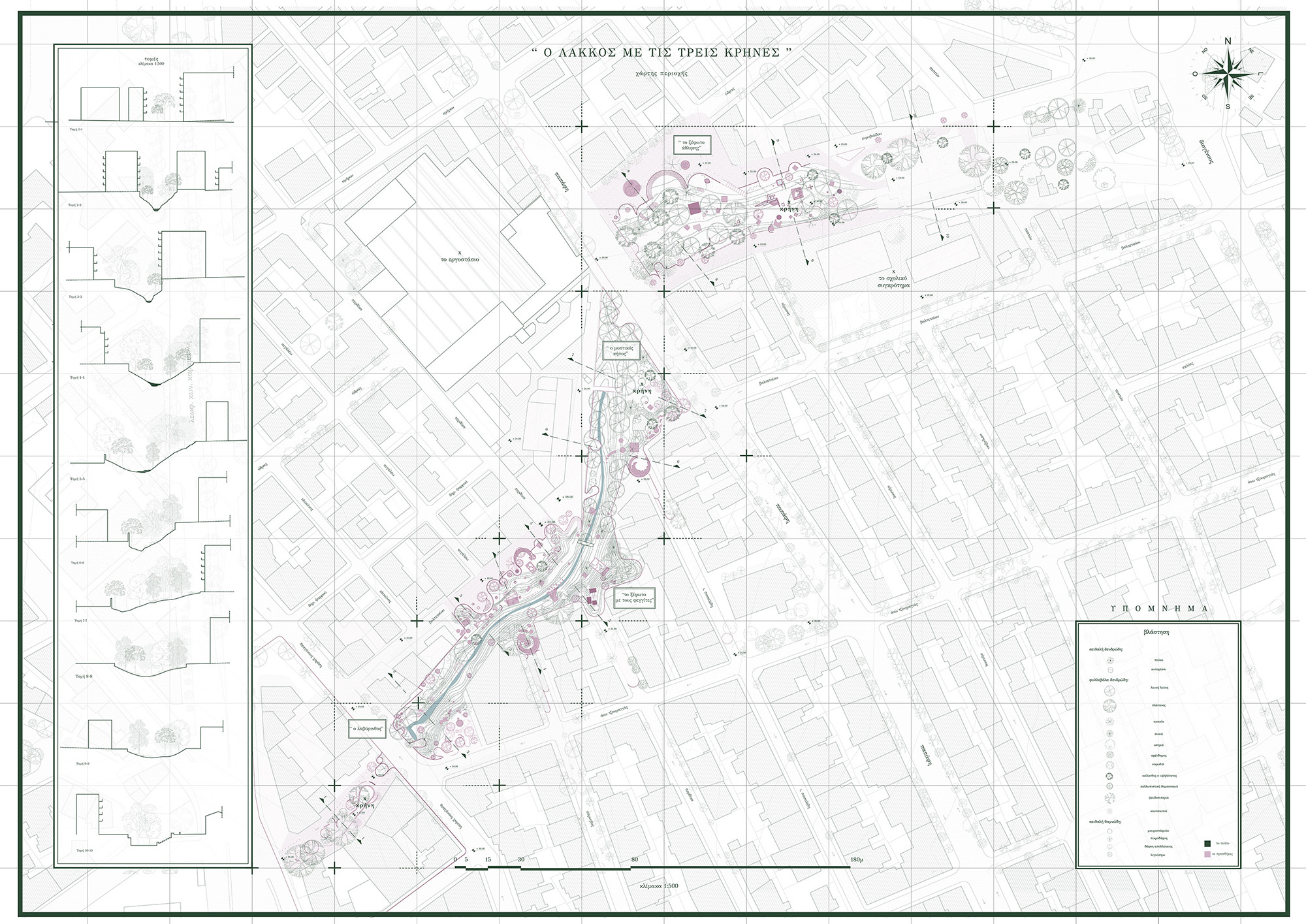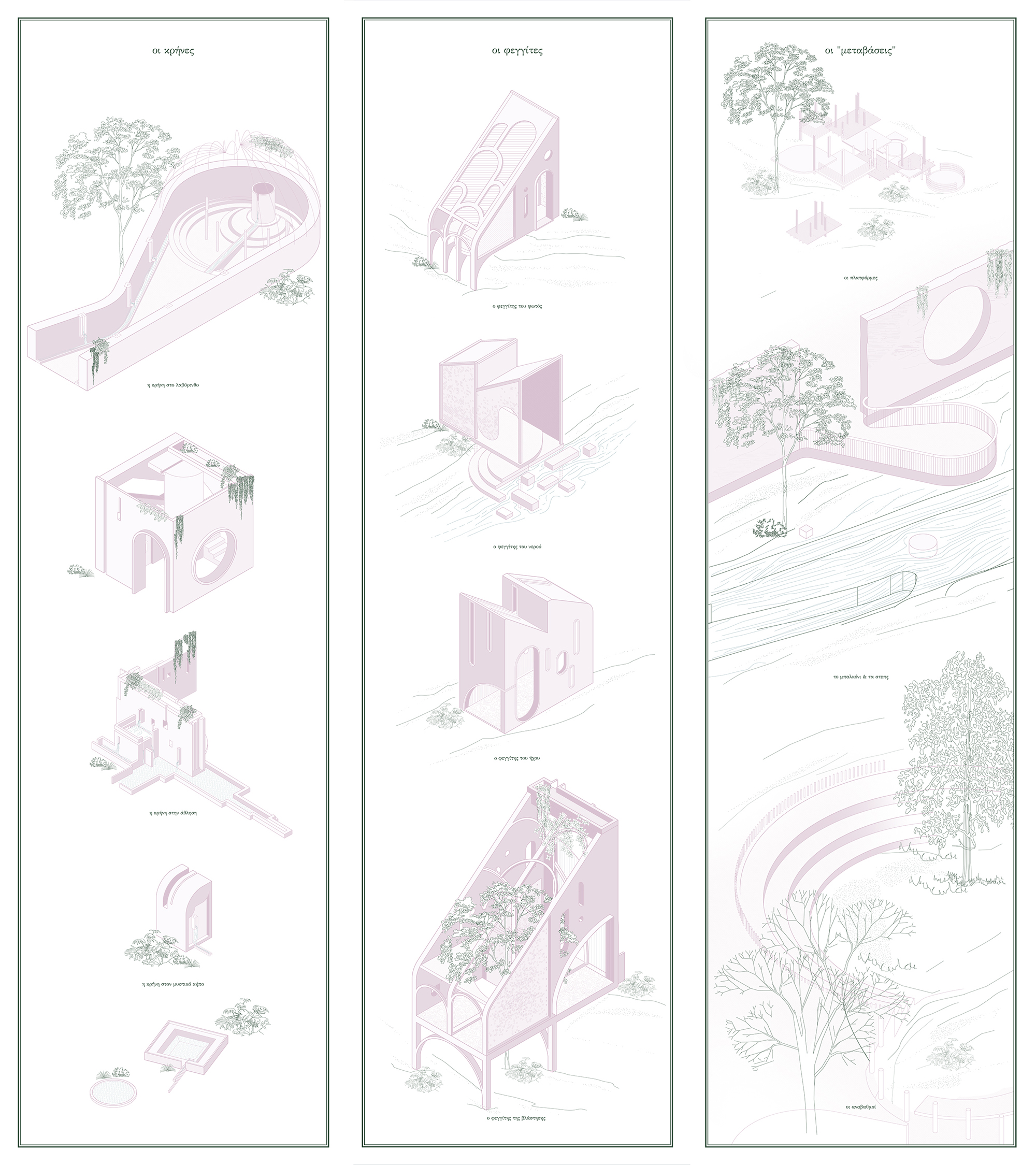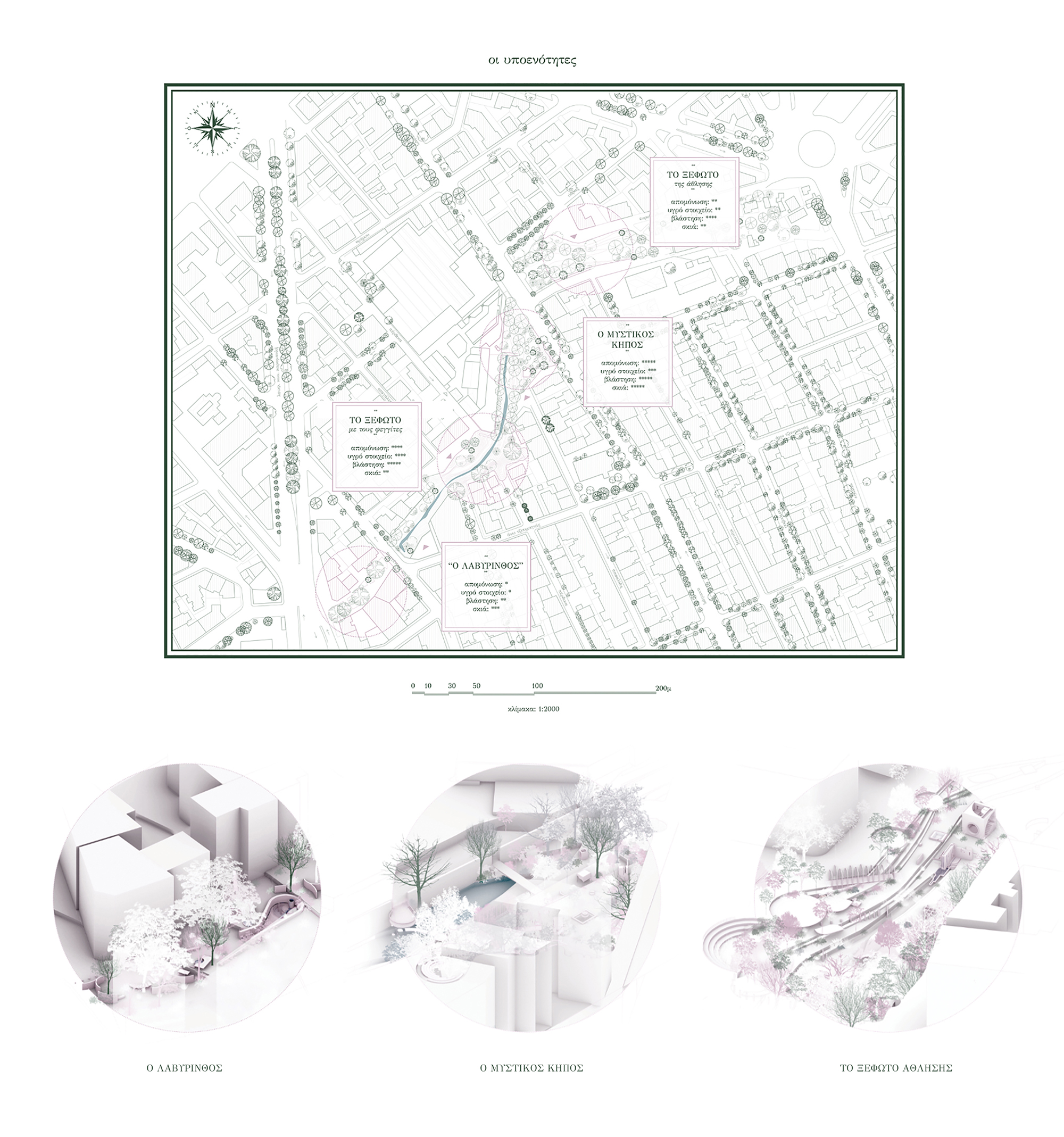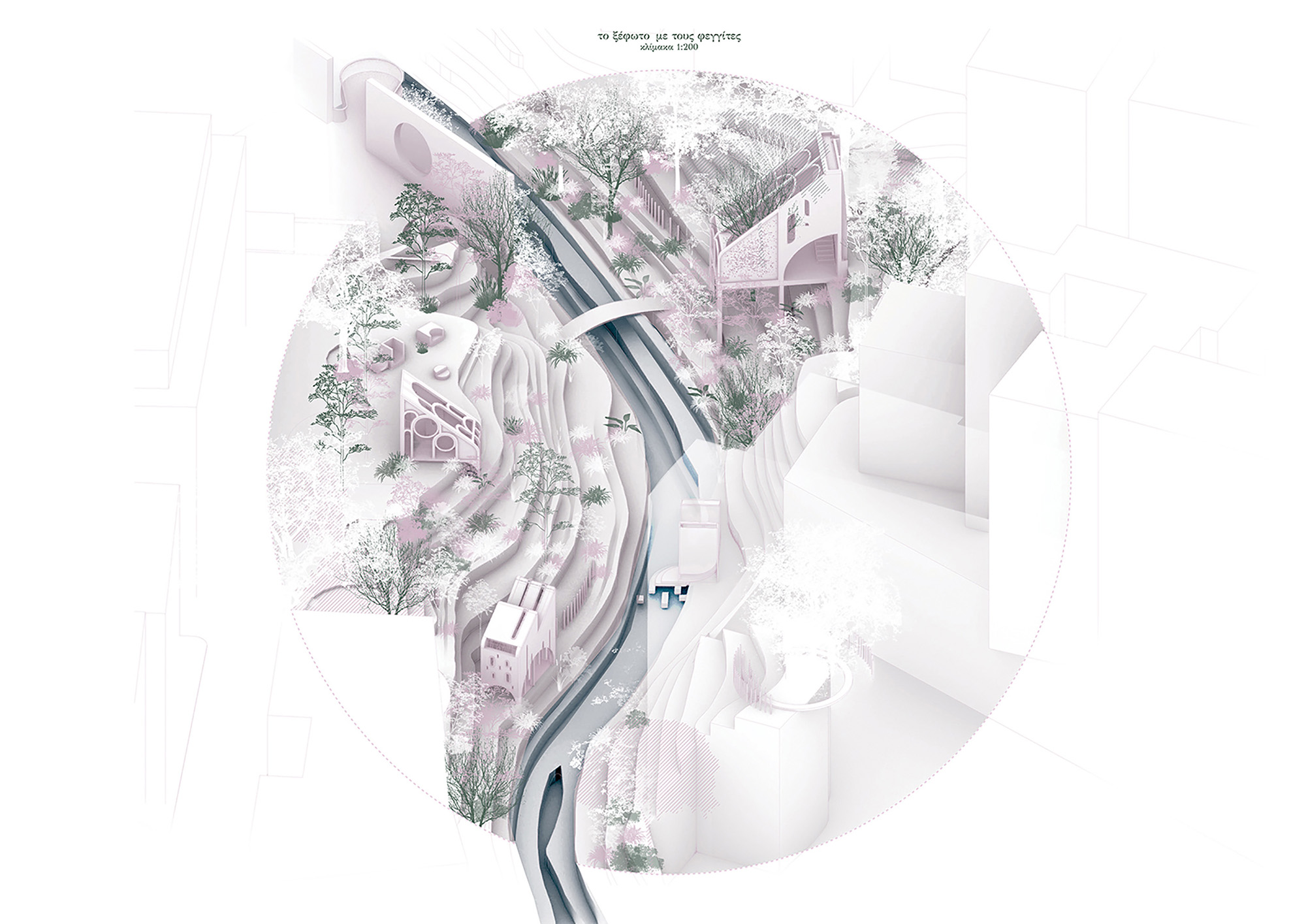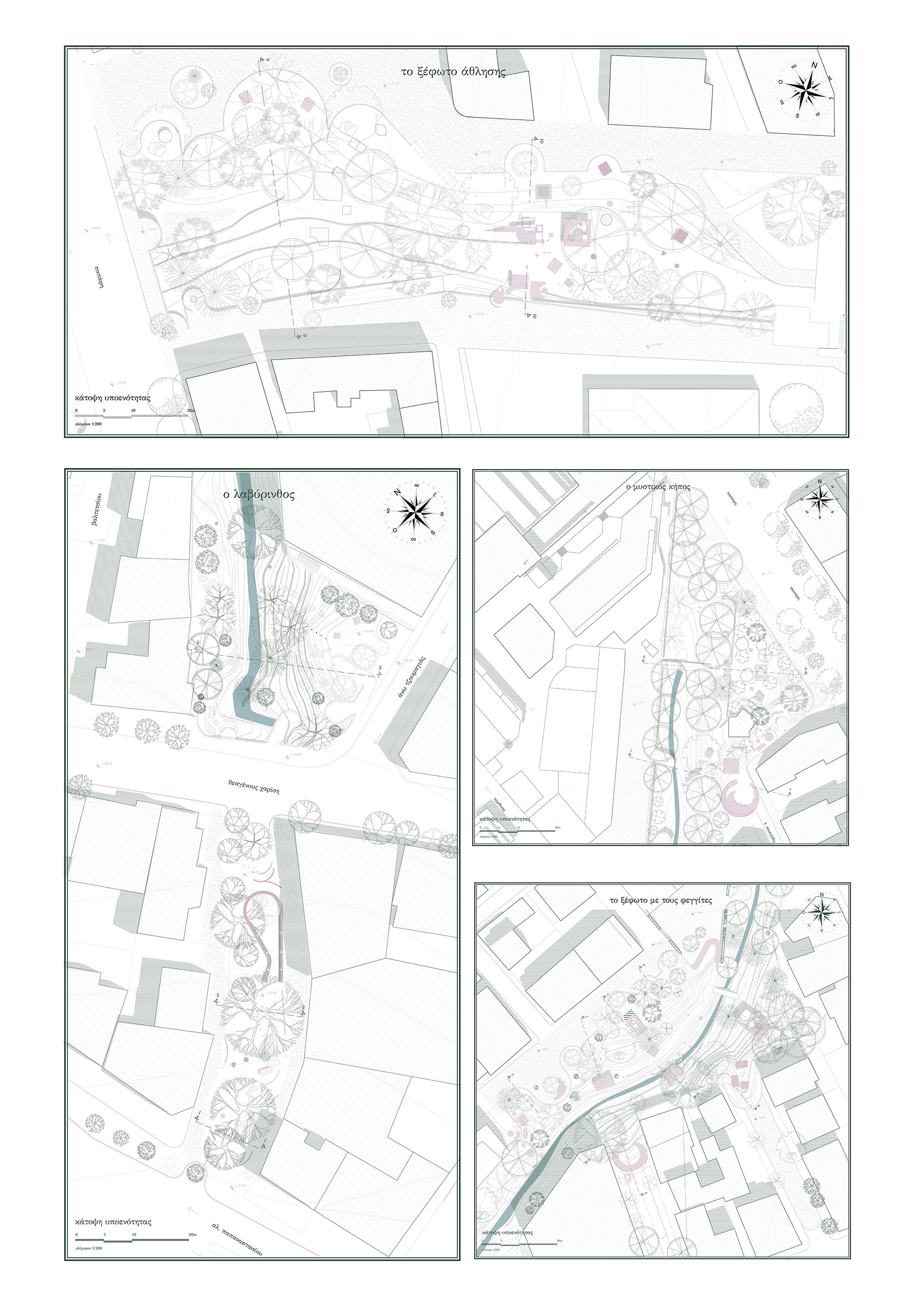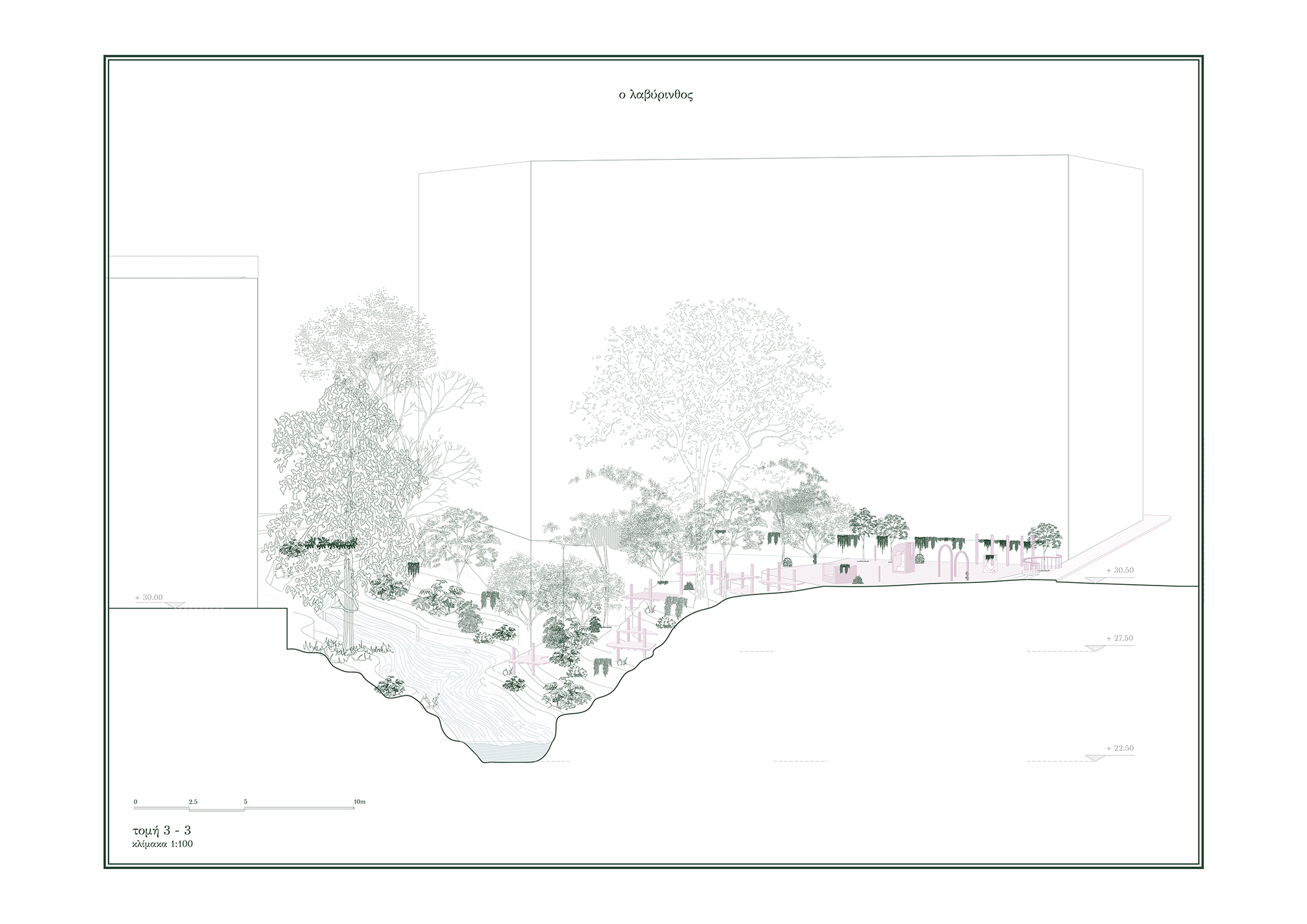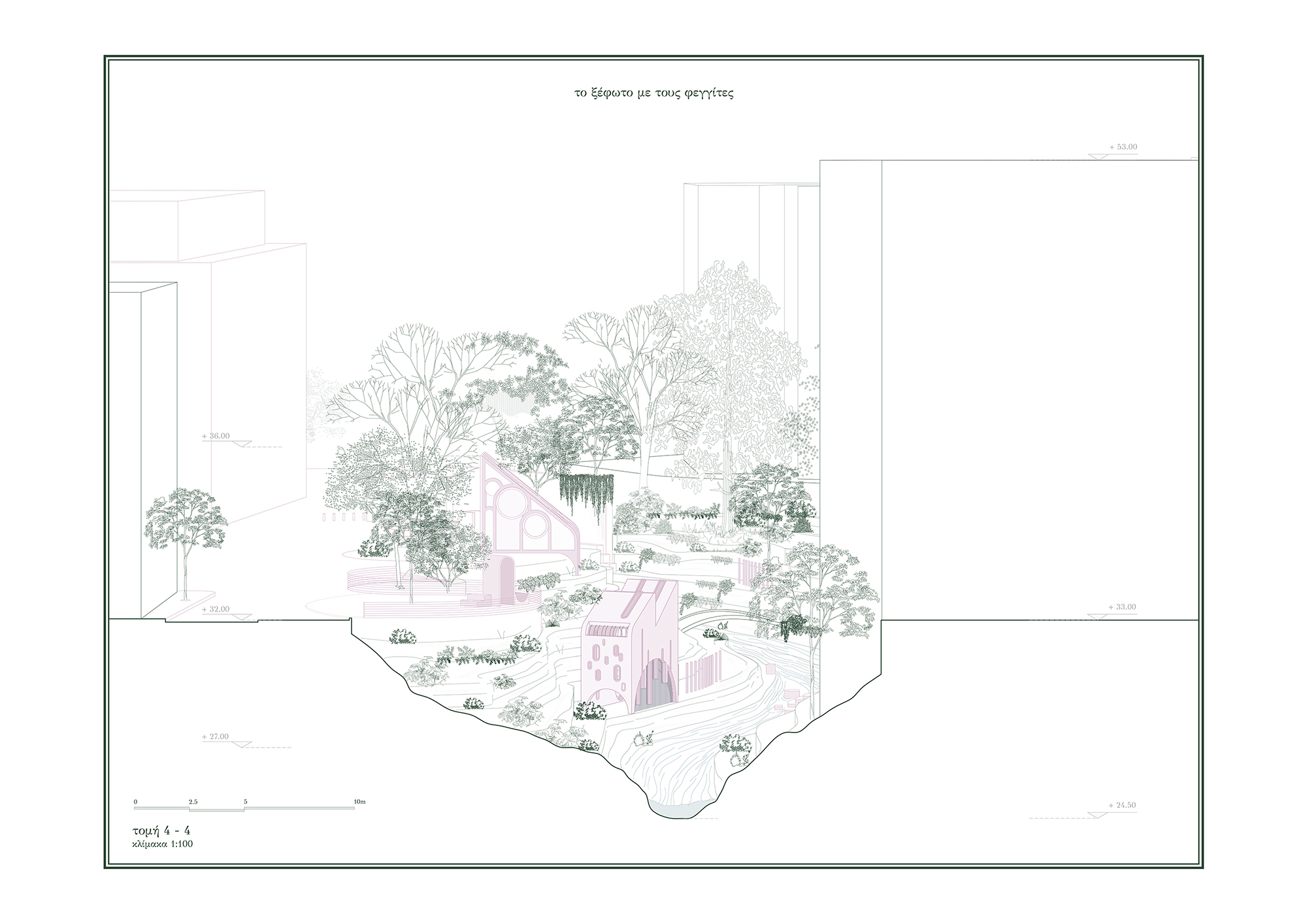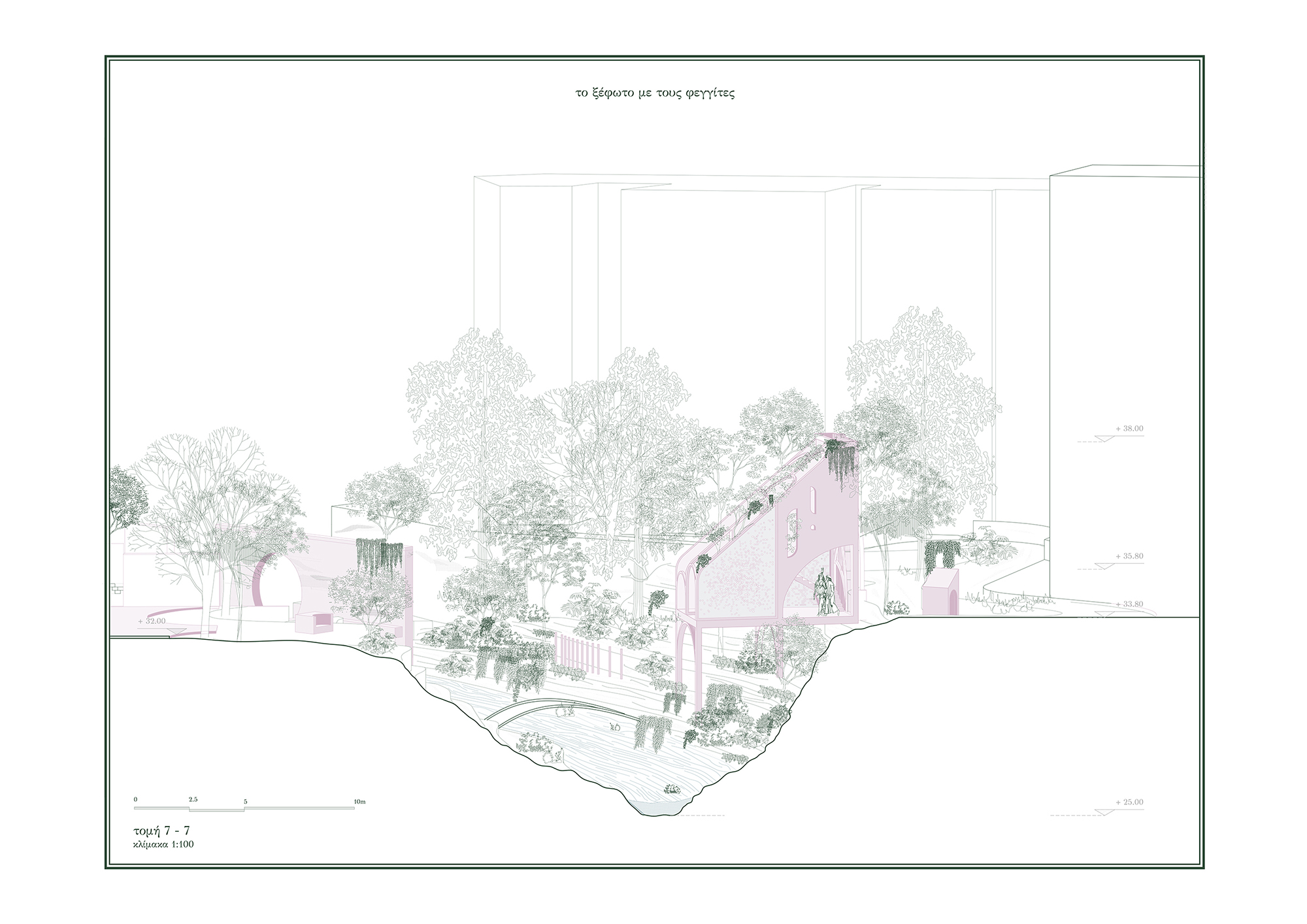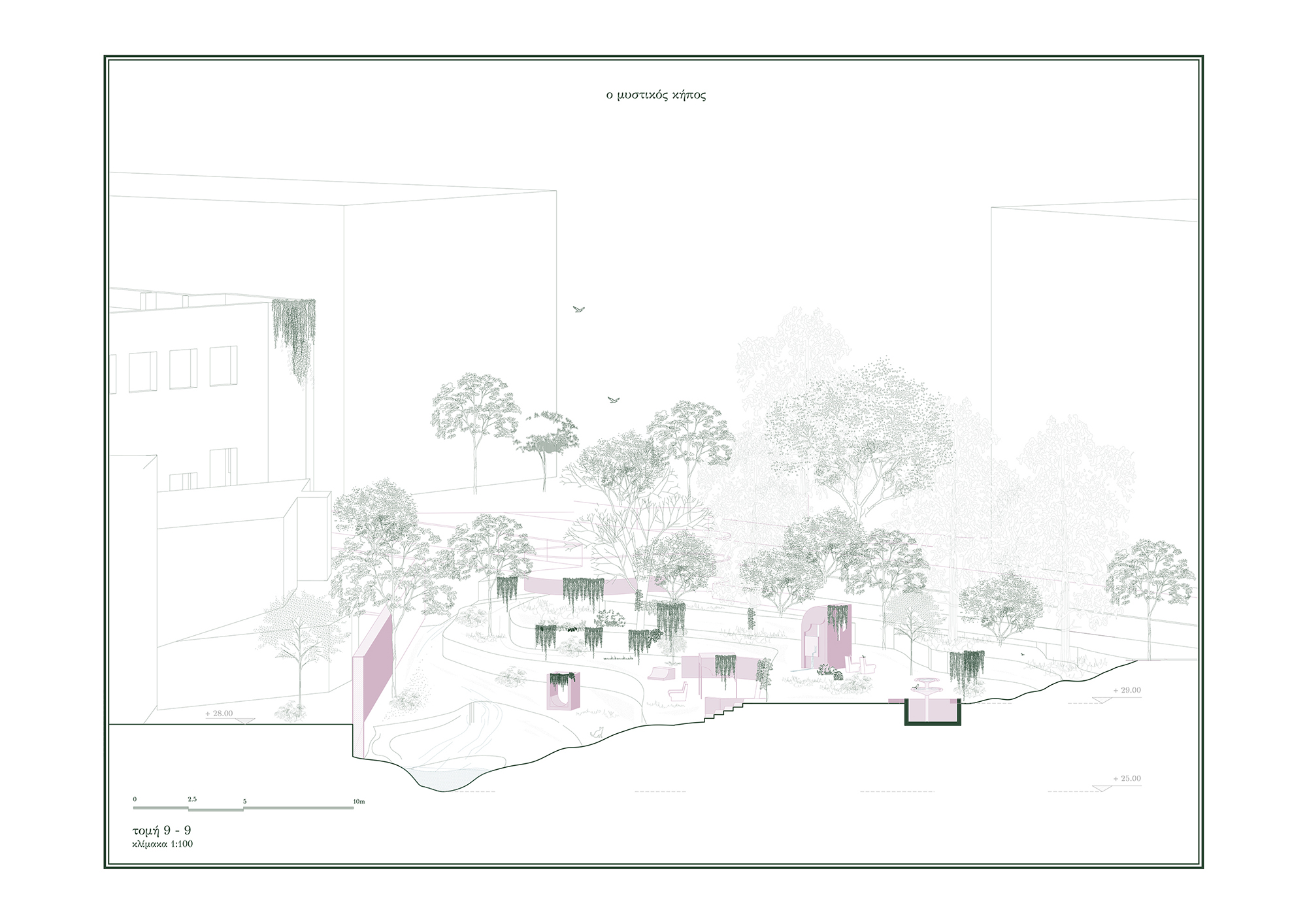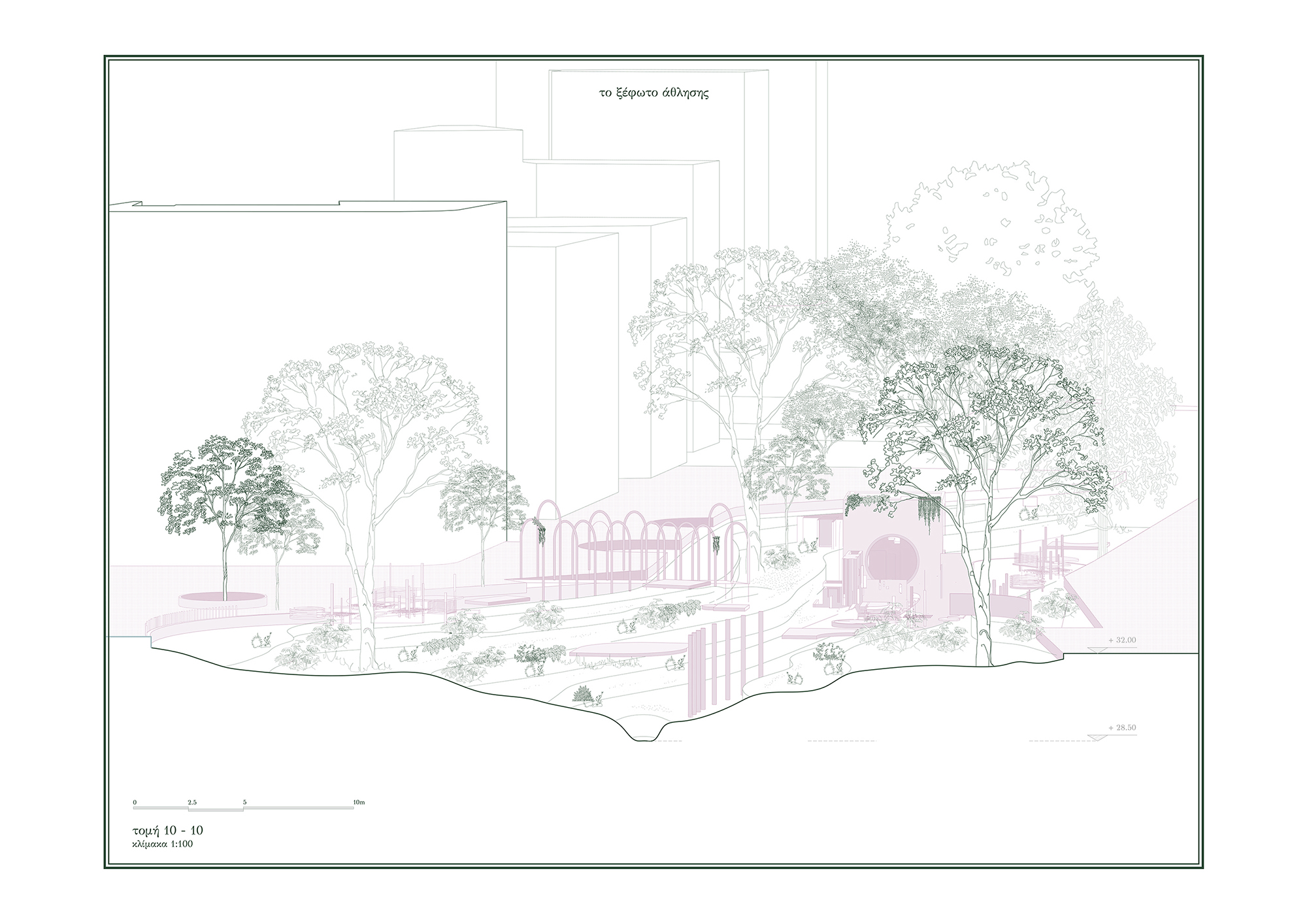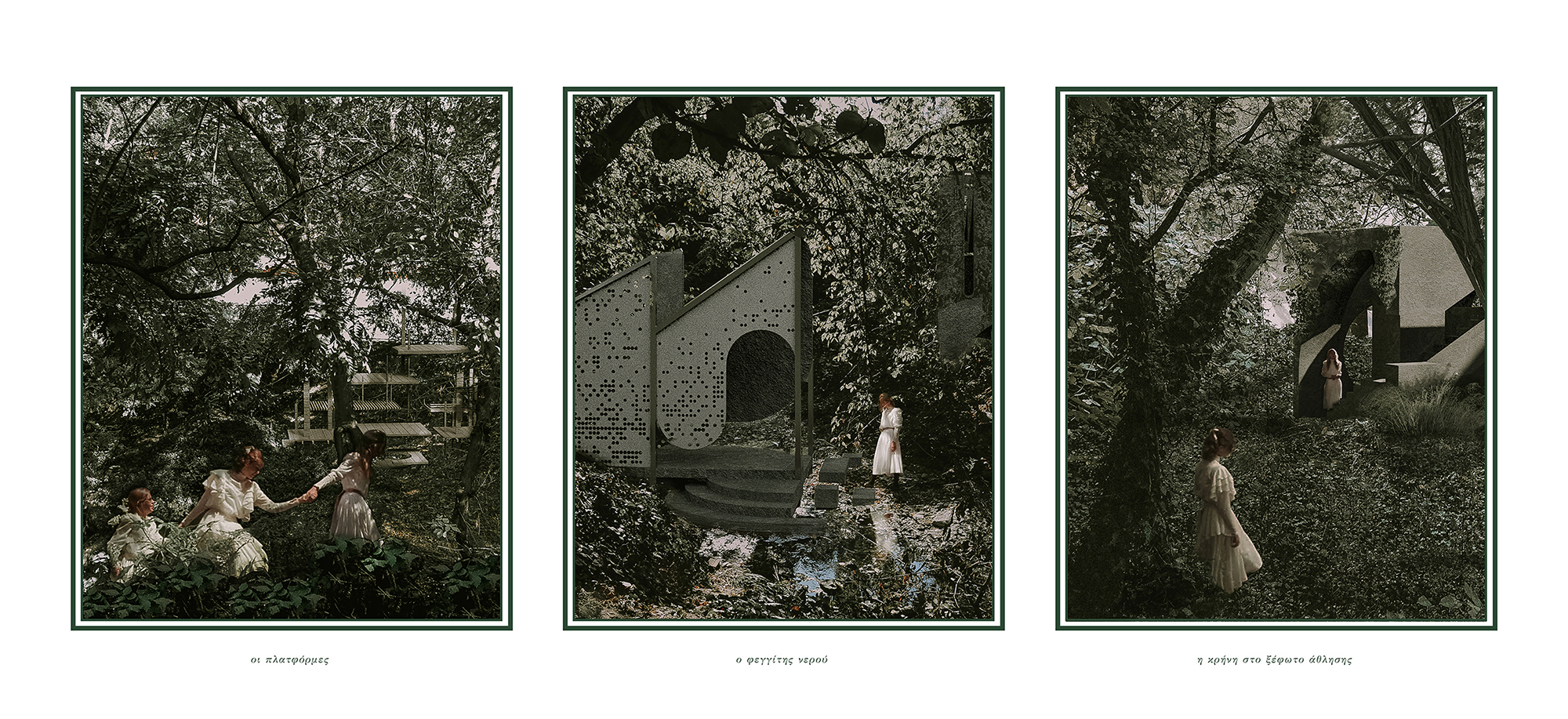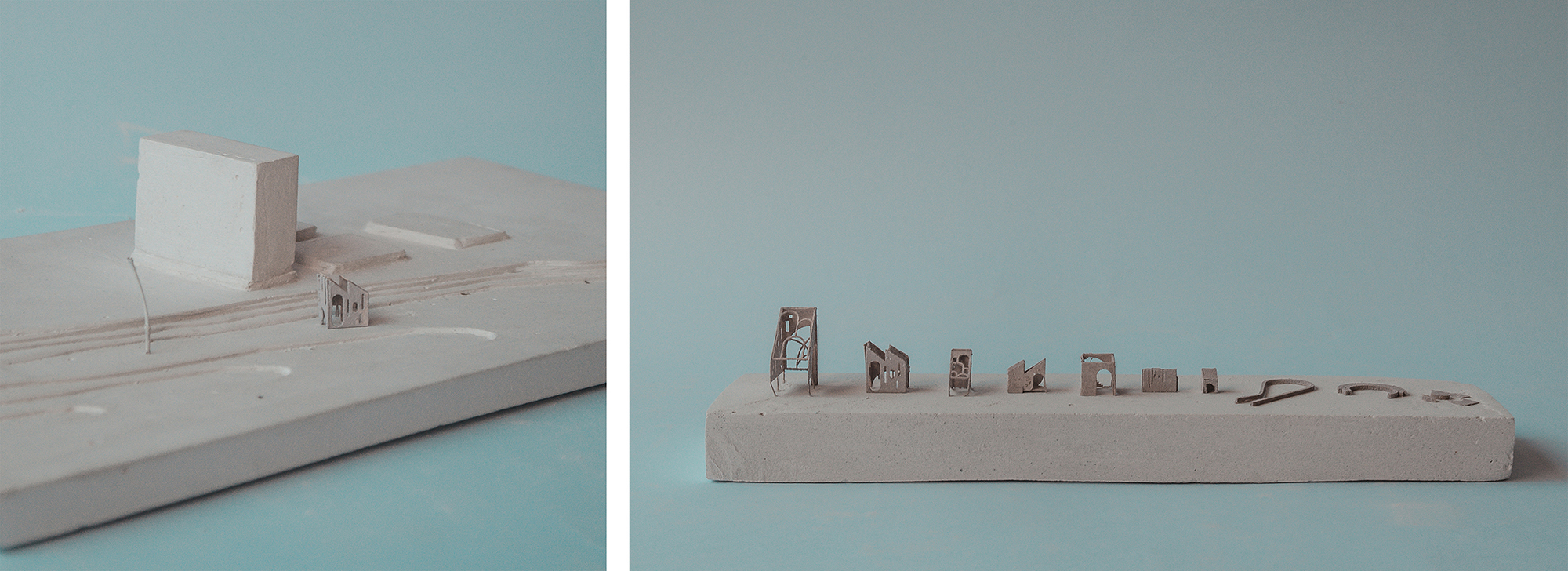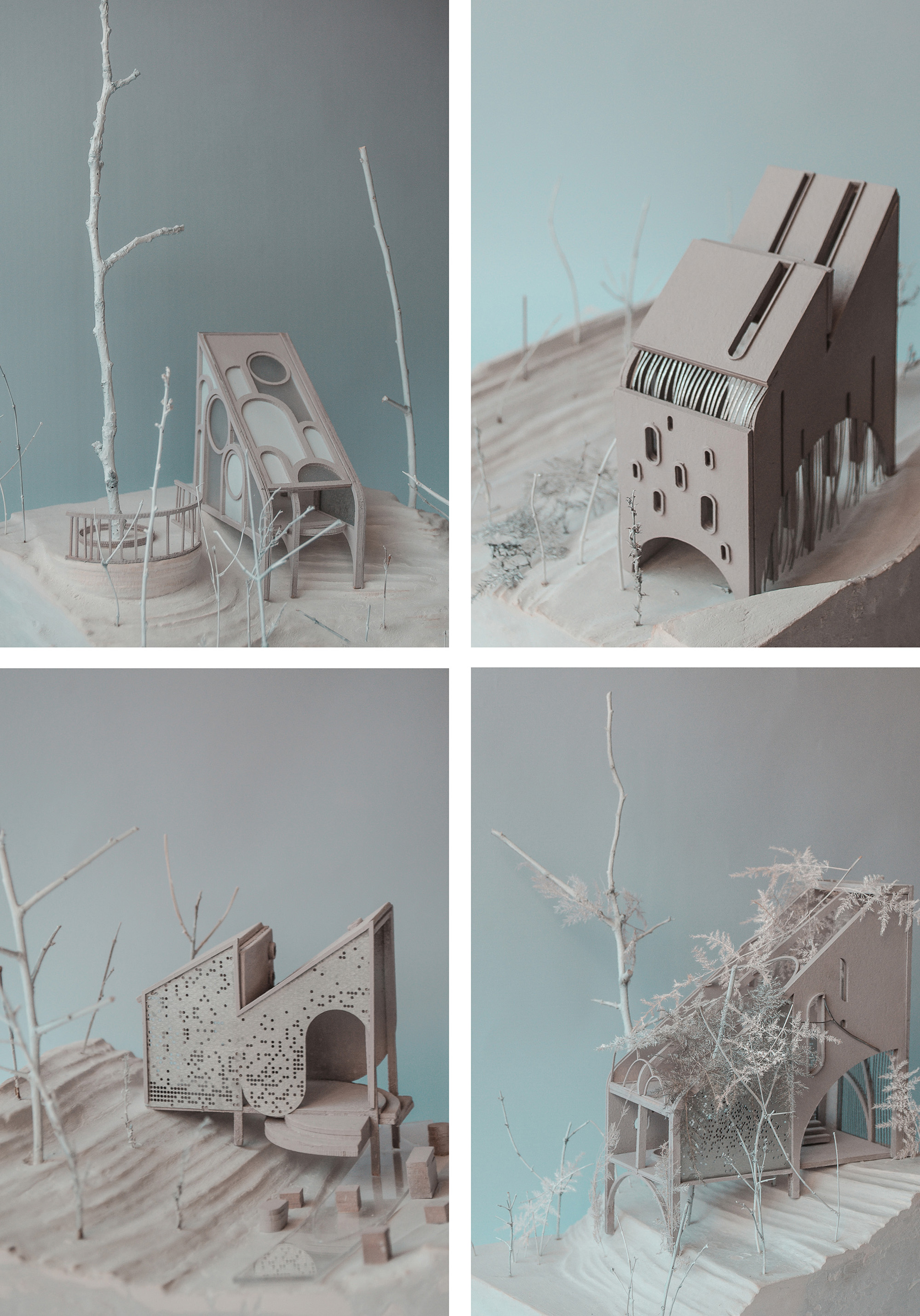Accompanying text
We are located in the area of Thessaloniki’s Kato Toumpa, in the neglected stream near the factory of ‘Ifanet’, which is perceived as an urban burden. The stream is an overlooked green oasis, a ‘pit’ in the city’s center, maintaining 300m of its natural terrain and a flowing stream. This proposal attempts to redefine the stream zone as a landscape through the individual’s vision. Architecture as a medium enhances the accessibility of the zone of the stream with gentle handling thus enabling the visitor to wander and discover new aspects of the landscape through different architectural artifacts, capturing new aspects of the untended landscape.
During the Ottoman period the stream was named as “Uc Cesmeler Deresi” which means the pit with the three fountains. The stream still maintains 300m of its original natural pit with running water. The banks of the streams begin to be characterized as “nature” during the first quarter of the 19th century. Nature begins to be regarded as a “landscape” when it ceases to be an obstacle for the individual that is now turning to it without a practical purpose. Nowadays this stream is treated as a hindrance to everyday life, with its difficult access to it due to the dense and indigenous vegetation, as well as its isolation, making it a suitable land of degradation, turning it into an urban limit. This diploma thesis is an attempt to redefine this stream zone as a “landscape” through different architectural manipulations.
The definition of “landscape” is difficult to be accurately described. According to Simmel, the wanderer’s attention of individual elements or simultaneously as an ensemble, is not enough to have the consciousness of the “landscape”. Seeing as a landscape a piece of land, along with everything in it, means to observe it this time on its own unique sight, an excerpt of nature as a unity, hence a landscape is not only considered the set of natural and artificial elements surrounding it, but also the way in which each observer gazes and understands it. Bearing in mind all the above, during strolls through the stream, various artifacts were found and captured, which have now lost their original purpose, becoming a part of the “landscape”.
The sense of the ‘focused’ which is part of a whole, was a basic principle of the proposal. New constructions are designed readopting the characteristics of objects found in the “landscape”, through which the walker will discover new aspects of the landscape through his unique point of view. The paths in the stream zone are depend on the walker and his choices as they are not strictly constructed. Considering the name of the stream during the Ottoman period, the undefined route is “united” with the design of three fountains in places where the less natural nature of the stream is maintained. The fountains function as a narrative tool, forming the landmarks of the subunits belonging in the whole unit of the stream.

